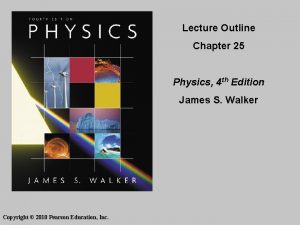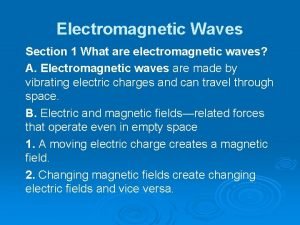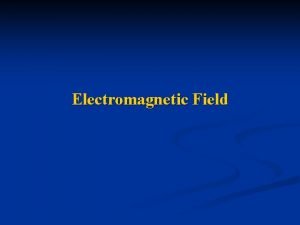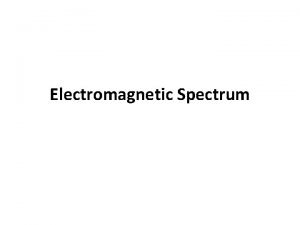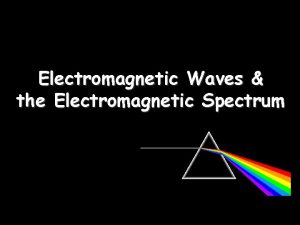Constant Electromagnetic Field Section 19 Constant fields E











- Slides: 11

Constant Electromagnetic Field Section 19

Constant fields • E and H are independent of time t. • f and A can be chosen time independent, too.

We can add an arbitrary constant to f without changing E or H. • • • Only a constant (no t or r dependence) can be added to f for constant fields. An extra condition is usually imposed, e. g. f = 0 at infinity. Then f is determined uniquely.

We can add an arbitrary constant to A without changing E or H, but we can also add functions. • A function of coordinates grad(f) can still be added to A without changing E or H. • A is not unique even for constant fields.

Energy of charge in constant electromagnetic field. If fields are constant, the Lagrangian is independent of time The energy is conserved and equals the Hamiltonian.

The constant field adds energy ef to the particle. • ef is the “potential” energy of a charge in the field. • The energy does not depend on A, so H does no work on the charge. • Only E changes the energy of a particle.

Uniform constant fields • Electric field has no r dependence • f = -E. r

Uniform constant fields • A is not unique • Two examples that both give uniform H: A 1 = (1/2) H x r A 2 = [-H y, 0, 0] • These two choices differ by grad(f), where f = -xy. H/2

One possible vector potential for a uniform field Let’s see if it works

The other possible choice of vector potential for uniform constant field was (We chose the z-axis parallel to the H field. ) Now let’s check this one

We said they differed by Let’s check the difference Were two of the possible choices for the vector potential of a uniform constant field
 Red fields to green fields
Red fields to green fields Momentum of electromagnetic field
Momentum of electromagnetic field Section 1 what are electromagnetic waves
Section 1 what are electromagnetic waves Section 1 what are electromagnetic waves
Section 1 what are electromagnetic waves Gauss law of magnetism
Gauss law of magnetism Individual differences factors
Individual differences factors Field dependent vs field independent
Field dependent vs field independent Electric field and magnetic field difference
Electric field and magnetic field difference Waveguide cutoff frequency
Waveguide cutoff frequency Database field types and field properties
Database field types and field properties Field dependent and field independent
Field dependent and field independent Magnetic field
Magnetic field

